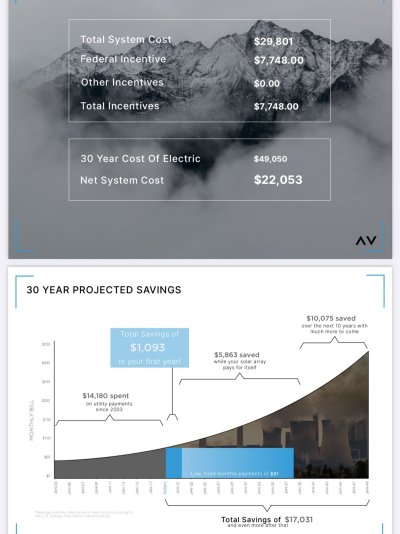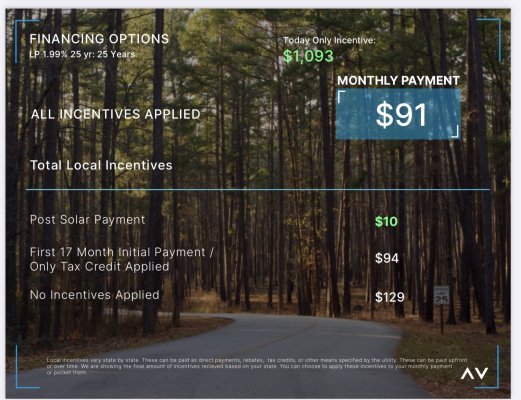Markola
Thinks s/he gets paid by the post
A company called Avolta has partnered with our utility to offer homeowners solar panels at no out of pocket costs. We figured, why not have them look at our garage, which has better sun exposure than our house? We got the proposal and, in fact, we’d qualify for $0 out of pocket and around $20/month savings on our electric bill over the first 25 years while the system is financed. Then about double that for the remaining 10 years of system life expectancy. We are intrigued and would like to contribute to energy sustainability but are personally leaning against this proposal, because:
1) The place I wanted to install the panels would have been on the western slope of our garage. However, the panels work better on the eastern slope, which is visible to us, and we’re not crazy about the aesthetics.
2). We’re burned out on construction projects right now after a grueling remodel, which itself will save some energy thanks to better insulation installed.
3). We figure panel prices might continue to fall and we might have a better deal later. We are in Minnesota, which is pretty progressive on energy policy but just doesn’t get the solar radiation of more southern states. Maybe panel efficiency will continue to improve, too.
4). We don’t intend to stay in the house for 35 years to enjoy all the financial benefits, though they are transferable to the next owner.
Are we missing something? Here is the core of the proposal:
1) The place I wanted to install the panels would have been on the western slope of our garage. However, the panels work better on the eastern slope, which is visible to us, and we’re not crazy about the aesthetics.
2). We’re burned out on construction projects right now after a grueling remodel, which itself will save some energy thanks to better insulation installed.
3). We figure panel prices might continue to fall and we might have a better deal later. We are in Minnesota, which is pretty progressive on energy policy but just doesn’t get the solar radiation of more southern states. Maybe panel efficiency will continue to improve, too.
4). We don’t intend to stay in the house for 35 years to enjoy all the financial benefits, though they are transferable to the next owner.
Are we missing something? Here is the core of the proposal:
Attachments
Last edited:


